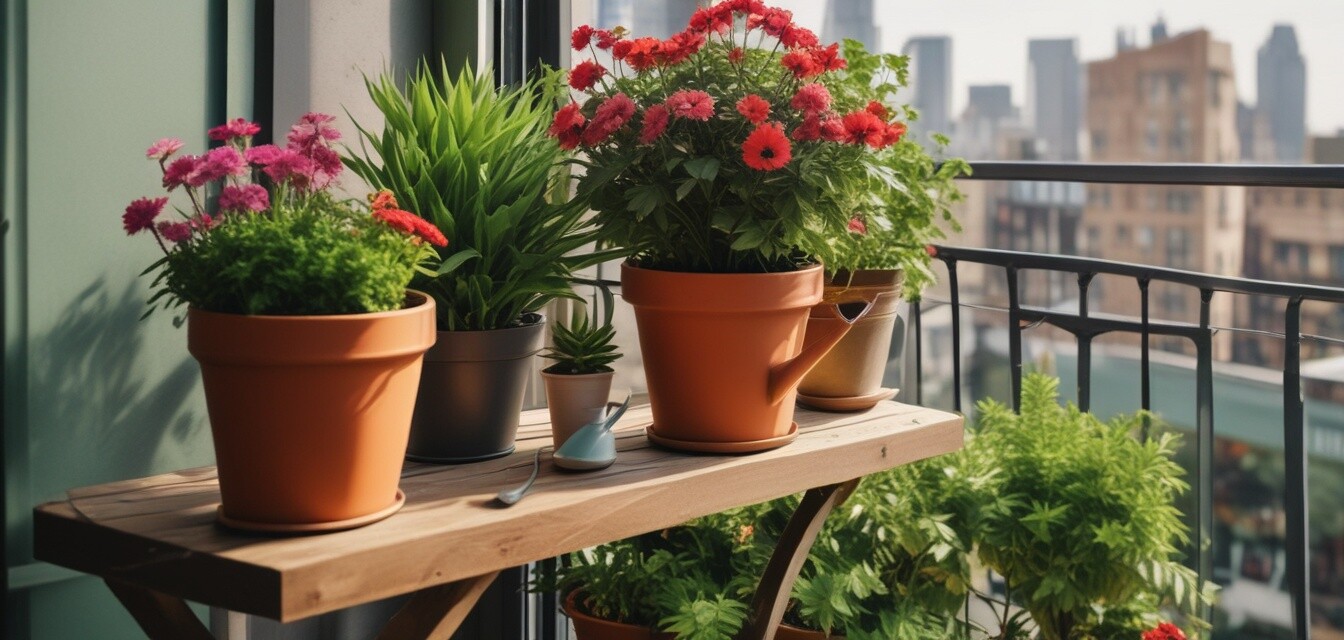
Creating a Watering Schedule for Your Houseplants
Key Takeaways
- Different plants have different watering needs; understanding these is crucial.
- Seasonal changes affect how often you should water your plants.
- A consistent watering schedule can lead to healthier plants.
- Using proper tools makes the process easier and more effective.
- Monitoring the moisture level of the soil is vital for success.
Creating a watering schedule for your houseplants is essential to maintaining a thriving balcony garden. Different plants have unique watering needs, and understanding these needs can help ensure your greenery flourishes in your urban oasis. In this article, we'll discuss how to gauge when and how much to water your plants, taking into consideration factors like plant type, environmental conditions, and seasonal changes.
Understanding Plant Watering Needs
Plants can generally be divided into categories based on their watering requirements. Below, you’ll find an overview of common types and their watering preferences:
| Plant Type | Watering Frequency | Tips |
|---|---|---|
| Succulents | Every 2-3 weeks | Allow soil to dry completely between watering. |
| Herbs | Every week | Keep soil moist but not soggy. |
| Ferns | Weekly | Keep soil consistently damp; avoid dry spells. |
| Ornamental Plants | Every 5-7 days | Check soil moisture regularly; adjust as needed. |
Creating Your Watering Schedule
Once you understand the needs of your plants, you can create an effective watering schedule. Here are the steps to follow:
- List all the plants in your balcony garden.
- Identify each plant's watering needs using the table above.
- Decide on specific days of the week or month you will water each plant.
- Use reminders on your phone or calendar to stay on track.
- Monitor the soil moisture and adjust your schedule as necessary.
Factors That Impact Watering
Several factors influence how often and how much you should water your plants, including:
- Seasons: Plants typically require more water in the spring and summer and less during the fall and winter.
- Humidity: Lower humidity levels can lead to faster evaporation, requiring more frequent watering.
- Container Size: Smaller containers dry out more quickly than larger ones, needing more frequent checks.
- Plant Size: Larger plants generally use more water than smaller plants.
Tools for Effective Watering
Having the right tools can make watering easier and more precise. Here are some recommendations:
| Tool | Purpose | Benefits |
|---|---|---|
| Watering Can | For targeted watering | Allows control over how much water reaches each plant. |
| Soil Moisture Meter | To measure soil moisture levels | Helps prevent over or under-watering. |
| Spray Bottle | For Leaf Care | Can provide moisture to the leaves and increase humidity. |
| Drip Irrigation System | Automated watering | Saves time and ensures consistent moisture levels. |
Common Mistakes to Avoid
When setting up your watering schedule, be mindful of these common pitfalls:
- Watering on a fixed schedule without considering the plant's actual needs.
- Ignoring seasonal changes in plant hydration needs.
- Overlooking the impact of temperature and humidity on evaporation rates.
- Neglecting to assess soil moisture before watering.
Tips for Beginners
- Start by watering the plants you find harder to manage.
- Use a notebook to track watering times and plant responses.
- Don’t hesitate to ask for advice from local gardening communities.
- Consider using self-watering pots for more difficult species.
Conclusion
Creating a watering schedule is a vital step in ensuring the health of your balcony garden. By understanding the needs of your houseplants, factoring in seasonal changes, and utilizing the right tools, you can cultivate a thriving green space. With a little attention and flexibility, your plants will reward you with their beauty and vibrancy. For more information on gardening techniques and tools, check out our Gardening Tips and Gardening Tools for Balconies.
Pros
- Improves plant health and growth.
- Helps to prevent over-watering or under-watering.
- Promotes a routine that makes plant care easier.
Cons
- Can be time-consuming initially.
- Requires adjustments based on the plant's growth and seasons.
- Overly rigid schedules may not account for environmental changes.